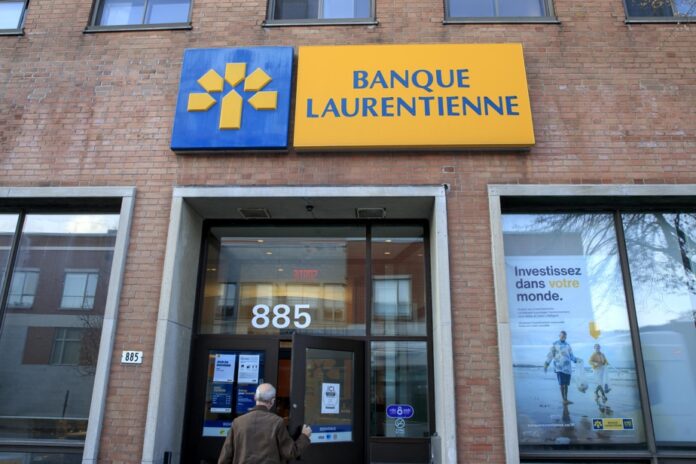Laurentian Bank streamlines its operations and lays off 2% of its workforce.
This decision, announced this week to employees, affects 55 people and is part of a desire to simplify the organizational structure.
The bank specifies that the majority of jobs affected are outside Quebec.
These layoffs will result in a restructuring charge of 6.5 million in the results of the current quarter which ends at the end of January.
Other short or medium-term layoffs are not ruled out according to the assessment that will be conducted by the new team of managers over the coming months.
“We must do better for our customers, our employees and our shareholders. We need to review our positioning,” says President and CEO Éric Provost in an interview.
He intends to act according to the following guiding principles: understanding the past to shape the future, simplifying the organization to increase efficiency, and refocusing the bank’s core activities to create maximum value for customers.
Although the bank’s strategic plan is under review and further details will not be revealed until the spring, Éric Provost indicates that three strategic priorities have been identified.
“The first is to become more customer-centric. We have made changes at the leadership level to place customer-focused individuals in key positions. We will continue to extend this approach throughout the bank. »
The second priority is to simplify the organization.
“We have failed to reduce spending at an appropriate pace in the past. We must now focus on making the bank work rather than transforming it. We will also review all products and projects. Products will be evaluated based on customer satisfaction, value and margins. Projects will be reviewed based on their ability to generate revenue or improve our business. If products do not meet certain thresholds, we will eliminate them. In the case of projects, we will pause or cancel them. »
Finally, he says, technology investments will be focused on the operation of the bank and improving systems.
Laurentienne has been directed by Éric Provost since the beginning of October. He was called in to replace Rania Llewellyn. The change came as a central system outage affected operations and shortly after the bank announced the conclusion of a review of its strategic options ruling out a sale.
The outage occurred during a planned IT maintenance operation. This breakdown which occurred in September weighed down the end-of-year financial performance revealed on Thursday.
Management maintains, however, that recent events have not had a “significant” impact on customers and deposits.
An adjusted net profit of 45 million was generated during the months of August, September and October, while the profit was 58 million a year ago.
Adjusted earnings per share reached $1 compared to analysts’ expectations of $1.16. Costs related to handling the outage had a negative impact of 9 cents on earnings per share. A year ago, adjusted earnings per share reached $1.31.
In total, the bank incurred a charge of 16 million in connection with the restructuring, breakdown and strategic review.
Revenues fell by 10 million year-on-year to 247 million. Analysts expected 262 million.
“The outage had less of a negative impact on the balance sheet (i.e. deposits) than some feared,” comments analyst Meny Grauman of Scotia. “Results were clearly affected by the outage, but the bank’s challenges go beyond this event. »
This expert is of the opinion that the bank must tighten the screw even more on spending.
Due to macroeconomic conditions, the high payout ratio and the high dividend yield, the board of directors decided to exercise caution and did not increase the dividend, as some observers anticipated.
The bank’s efficiency ratio has also deteriorated this year. It rose to 69.9% for the 2023 financial year while it was 66.5% in 2022.
The efficiency ratio measures the ability to transform expenses into profits. It is notably influenced by the economic context, the business mix and the approach (restrictive or more liberal) of management to expenses. An increase in the ratio shows a deterioration in efficiency.
“The objective of the previous strategic plan was to bring the efficiency ratio below 65%,” recalls Éric Prévost. “We’re not going in the right direction. We’re going to go back to the drawing board to make sure we change course to move in the right direction. »















